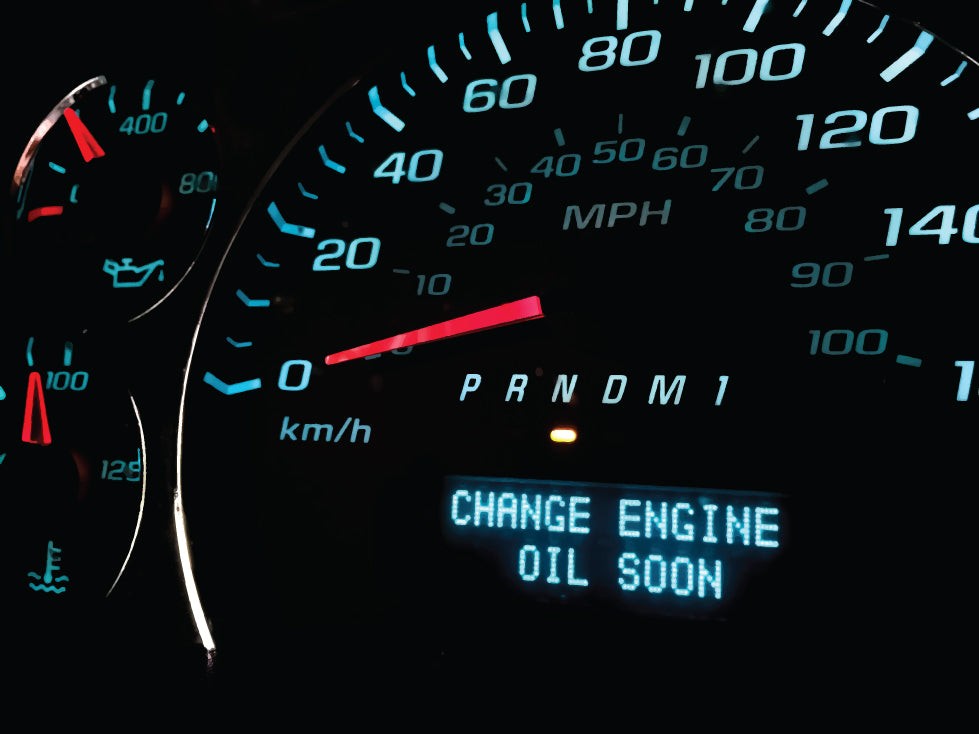Seeing the oil change light pop up on your dashboard can be a little unsettling, but it’s important to understand what this light actually means. Unlike the more serious oil warning light, the oil change light, often called a service light, is simply a reminder that your vehicle is due for routine maintenance, specifically an oil change. It’s not triggered by critical issues like low oil pressure or oil leaks, for which your car has a separate, more urgent warning system. Ignoring the oil change light itself won’t lead to immediate engine damage, but consistently neglecting your oil changes can have serious long-term consequences for your engine’s health and longevity.
 Car dashboard displaying the oil change maintenance light symbol, indicating a service reminder for engine oil replacement.
Car dashboard displaying the oil change maintenance light symbol, indicating a service reminder for engine oil replacement.
Engine oil is the lifeblood of your vehicle, performing several critical functions to keep your engine running smoothly and efficiently. It lubricates all the internal moving parts, reducing friction and wear, which in turn extends the life of your engine. Beyond lubrication, engine oil also plays a crucial role in preventing corrosion by neutralizing harmful chemicals and minimizing engine deposits thanks to special detergents included in the oil formulation. Regular oil changes are therefore essential for maintaining optimal engine performance, fuel efficiency, and preventing costly repairs down the road.
Thankfully, resetting the oil change light after performing an oil change is often a straightforward process, especially with the help of an OBD2 scanner. For many DIY car owners, an OBD2 scanner provides a simple and efficient way to turn off the oil change light without needing complex manual procedures. OBD2 scanners like the Innova 5210 and newer models are equipped with oil reset capabilities, making this task easy to accomplish.
Using an OBD2 scanner to perform an oil reset offers several advantages. It can save you time and effort by bypassing potentially confusing manual reset procedures that vary from vehicle to vehicle. Moreover, in situations where the oil change light remains illuminated even after attempting a manual reset, an OBD2 scanner can provide a reliable solution to ensure the light is properly turned off, giving you peace of mind that your maintenance reminder is accurately reflecting your car’s service status.
While manual reset procedures exist for many vehicles, they can sometimes be cumbersome or ineffective. An OBD2 scanner simplifies the oil reset process, making it accessible to anyone looking for a quick and dependable way to manage their car’s maintenance reminders. Investing in an OBD2 scanner can be a worthwhile decision for vehicle owners who prefer to handle routine maintenance tasks themselves and want to ensure accurate and efficient service light resets.
